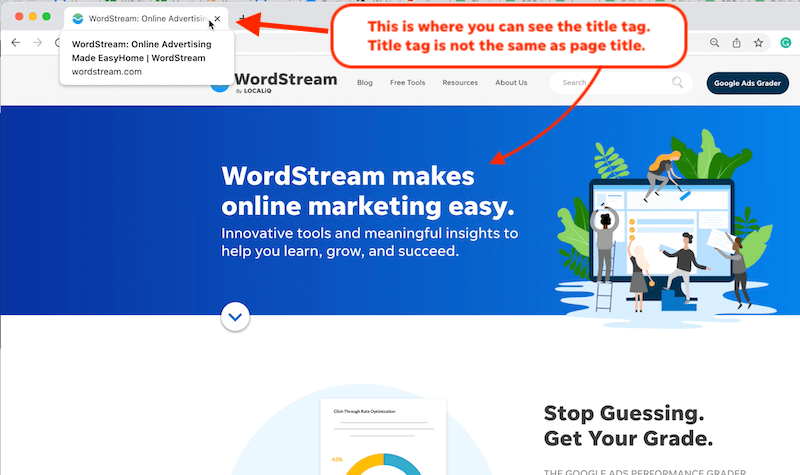Discovering What Is Ruled Out a Default Medium in Google Analytics for SEO
Discovering What Is Ruled Out a Default Medium in Google Analytics for SEO
Blog Article
Believing Outside package: Leveraging Unusual Tools to Maximize Google Analytics Efficiency
In the world of electronic advertising, the pursuit for improved Google Analytics performance has become a calculated vital for services seeking to fine-tune their on the internet existence. Typical techniques usually fall brief in recording the full spectrum of customer communications and habits. By discovering unconventional mediums as methods of information collection, a new world of opportunities emerges. These uncharted territories offer a wide range of untapped insights that can potentially change the method we understand and maximize our electronic techniques.
Special Data Sources

Social media systems offer important information on user demographics, interests, and engagement metrics, allowing organizations to gauge the effectiveness of their social media projects and optimize web content for better performance. By leveraging these special data sources, organizations can refine their methods, enhance targeting efforts, and boost general Google Analytics efficiency.
Social Media Site Insights

Furthermore, social networks analytics tools enable companies to track vital efficiency indicators, screen project efficiency, and determine the impact of their on-line activities. Understanding the demographics of fans, identifying prominent material themes, and reviewing interaction degrees can assist companies customize their advertising and marketing techniques for far better results.
Offline Advertising And Marketing Integration
Incorporating offline marketing approaches with digital analytics can enhance general project performance and offer a more detailed understanding of customer behavior. what is not considered a default medium in google analytics. By bridging the gap in between online and offline initiatives, companies can track the influence of traditional advertising and marketing channels such as print ads, television commercials, direct-mail advertising, and events on their on-line visibility

Furthermore, executing call monitoring systems for offline marketing activities enables organizations to record useful data on client queries produced via printed promotions or materials (what is not considered a default medium in google analytics). By examining call information alongside on-line metrics in Google Analytics, organizations can get deeper understandings into the client journey and optimize marketing strategies for enhanced efficiency across all networks
IoT and Wearable Innovation
Using IoT and wearable technology in electronic analytics can revolutionize information collection and consumer insights for organizations seeking a much deeper understanding of user behavior patterns. These cutting-edge modern technologies provide a smooth way to gather real-time data from different touchpoints. IoT tools can track user communications with products or solutions, giving valuable details on usage patterns and choices. Wearable modern technology, such as smartwatches or physical fitness trackers, can supply insights into individual tasks, health metrics, and even location data.
Gamification Techniques
The execution of gamification techniques in electronic analytics provides a cutting-edge approach to enhancing user involvement and driving actionable insights for services. By including game-like components such as points, badges, leaderboards, and awards into the analytics interface, news companies can motivate individuals to engage extra regularly and meaningfully with the information.
Gamification motivates individuals to discover various attributes of the analytics system, uncovering important insights that might have otherwise gone undetected. Via interactive difficulties and progress monitoring, customers are incentivized to dig deeper into the data, resulting in enhanced time spent on the system and a greater probability of finding essential trends or patterns.
Moreover, gamification can foster a feeling of competitors among customers, stimulating them to make every effort for greater performance and involvement levels. This competitive spirit can drive increased customer adoption prices and that site an extra extensive utilization of the analytics tools readily available. Eventually, by leveraging gamification techniques in digital analytics, organizations can produce a more effective and engaging setting for individuals, resulting in even more educated decision-making and improved overall efficiency.
Conclusion
To conclude, leveraging unconventional tools such as unique data resources, social media sites insights, offline advertising assimilation, IoT and wearable technology, and gamification methods can enhance Google Analytics efficiency. By assuming outside the box and checking out these alternative sources of information, companies can get valuable insights and boost their overall advertising methods. It is necessary for companies to continually explore new ways to gather data and assess it in order to stay ahead in the ever-evolving electronic landscape.
By integrating information from sources such as client connection administration (CRM) systems, social media systems, and email advertising projects, services can obtain an extra thorough understanding of their audience behavior and engagement patterns. Social media platforms offer important information on customer demographics, passions, and involvement metrics, permitting organizations to evaluate the effectiveness of their social media campaigns and maximize web content for far better performance. By leveraging these distinct information resources, this contact form businesses can improve their methods, enhance targeting efforts, and improve general Google Analytics efficiency.
Checking out social media insights can provide organizations with beneficial information on user demographics, interests, and interaction metrics, allowing for educated decision-making and critical optimization of marketing initiatives. By thinking outside the box and discovering these alternate sources of information, organizations can gain useful insights and improve their general advertising approaches.
Report this page